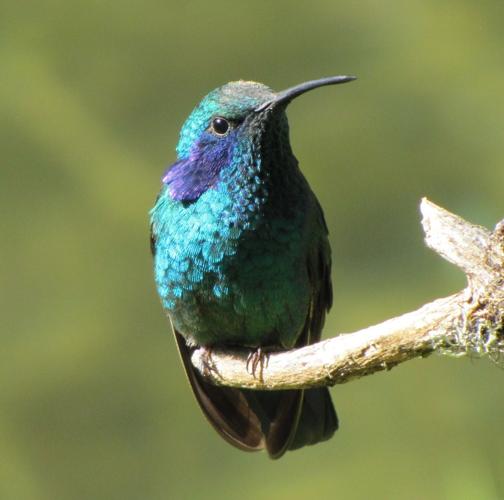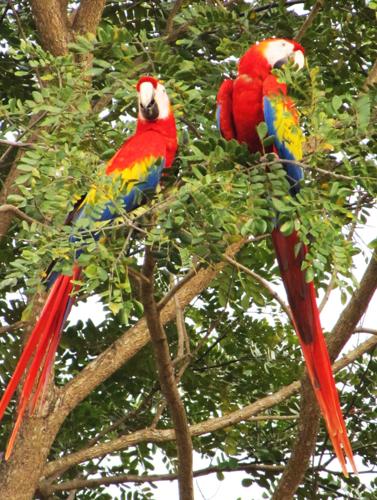Costa Rica has always been a desirable destination for travelers, as well as vacation and permanent homebuyers. There are good reasons for this popularity: the scenery is beautiful; the people are friendly and the climate near ideal. More money is spent on education than on the military. In fact, no money is spent on the military, because they don’t have one. This might seem risky, but it’s hard to have a military coup d’état with no generals, or a guerilla uprising with no one to fight. Consequently, Costa Rica has avoided the bloodshed common to her neighbors over the past decades, enjoying instead booming tourism and investment.
If you’re a birder, you know 900 other good reasons to visit. Nearly that many species of birds have been documented in Costa Rica, more than the entire United States and Canada combined. This is particularly remarkable when you consider that the country is smaller than West Virginia. This many birds packed into such a small country gives Costa Rica the distinction of having more species per square mile than any other country in North, Central or South America. Some 600 of these are year-round residents, with the balance migrating in from North America each winter.
Not surprisingly, winter brings birders as well as migratory birds to Costa Rica. It’s rewarding to discover familiar warblers, orioles and vireos so far from home, but it’s the local birds that grab your attention. Costa Rica is home to Aracaris, Toucans, Leaftossers, Foliage-gleaners, Flowerpiercers and dozens of other birds as colorful as their names. Scarlet Macaws in flight bear an uncanny resemblance to Superman, and when you see the size of a Toucan’s bill, you wonder that it can fly at all. In fact, heavy-billed Toucans and Aracaris fly ‘downhill’, climbing up one tree in order to glide down to the next.
Hummingbirds are plentiful, with 52 species. Some of these are familiar, like our migrating Ruby-throated and Magnificent Hummingbirds. Most, however, are night and day unfamiliar, and many of their names are imaginatively descriptive. Wouldn’t our hummers be more exciting with names like Purple-crowned Fairy, White-tipped Sicklebill, Violet Sabrewing, Garden Emerald, or Purple-throated Mountain-gem? Maybe we should start a petition.
With the densest avian population in the Americas, you would think finding birds in Costa Rica an easy task. You would be right. Macaws perched and posed over our cabin at Cerros Lodge, and Fiery-billed Aracaris came to the banana feeders every morning. Blue-throated Goldentails visited the Heliconias that grew in our open-air bathroom. Wherever you venture in Costa Rica, you will find birds. Even in the streets and parks of the capital, San Jose, where parrots chatter in the treetops. One of the most interesting revelations for a visiting birder is that a short drive from one location to another often creates a dramatic change in species. This might sound unusual for such a small country, but Costa Rica’s geography bears little resemblance to West Virginia. Ten degrees north of the equator and just one country from South America, Costa Rica lies along both the Caribbean and the Pacific Ocean. Habitat ranges from sea level to mountains two miles higher. Add volcanoes and tropical rainforests, and you have the perfect environment for rich birdlife. This dynamic melting pot of birds gives distribution mapmakers headaches, but is a paradise for birders.
If you have the opportunity to visit Costa Rica, don’t hesitate. If you want to see the greatest variety of birds, spend some time in as many different locations as possible. Consider the dry winter months, and avoid high-end, air-conditioned hotels. Fresh-air eco lodges cater to birders, and are found throughout the country. Air-conditioning would only mask the operatic arias of a Melodious Blackbird or the indescribable song of an Oropendula. Besides, you’ll never see a Cinnamon Hummingbird in an indoor bathroom.
If you have questions about birding and travel in Costa Rica, call Bob or Prudy at 825-9895, or email bobandpru@aol.com. Use the same contacts to join Bob’s weekly birding email, and don’t forget his web site, www.birdingthebrooke.com.








